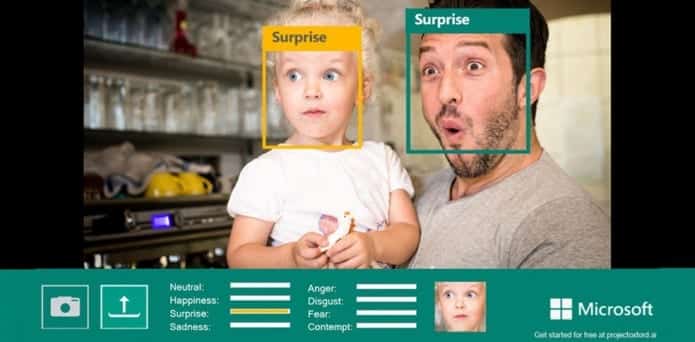Microsoft can find out if you are happy or sad with its new AI technology
The one thing that seperate humans from machines is that we have emotions and feelings, which cannot simply be broken down into the binary code. Well, Microsoft is trying to give the same ability to machines to sense what we humans are feeling at the moment through the analysis of photos.
Microsoft revealed that it plans to release new tools in its Project Oxford that will help developers take advantage of latest advances in machine learning and artificial intelligence, including a tool that can recognize emotion. The announcement was made by the company at the Future Decoded conference in London on Wednesday.
Project Oxford introduced in May at the Build conference is a suite of developer tools based on Microsoft’s machine learning and artificial intelligence research. It uses a Web-based RESTful interface to add text, voice, and image services. Project Oxford face, speech, and computer-vision APIs have also been included as part of the Cortana Analytics Suite.
Based on universal facial expressions, the emotion tool can be used to create systems that recognise eight intrinsically human emotional states – anger, contempt, fear, disgust, happiness, neutral, sadness or surprise.
It’s hoped that developers will use these to create apps that let marketers gauge people’s reaction to shop windows, films, or even food.
The emotion tool is now available to developers as a public beta, which is a limited free trial. Other new tools announced on Wednesday will be released as beta versions by the end of the year.
This also include a spell check tool, which will identify common sense errors like the difference between “four” and “for” thanks to contextual machine learning as well as slang words.
It also includes video – which detects motion, automatically edits video by tracking faces, and stabilizes shaky video as seen in the Microsoft Hyperlapse.
Speaker recognition will also be available for free by the end of the year, allowing developers to learn the intricacies of an individual’s voice. This could assist with security measures, Microsoft said.
Custom Recognition Intelligent Services (CRIS) can tailor voice recognition for a specific situation, such as a noisy venue. The tool can be used to help an app better understand people who have traditionally had issues with voice recognition, such as non-native speakers or those with disabilities. Microsoft said that it will be available as an invite-only beta by the end of the year.
Updates to Project Oxford’s face APIs to include facial hair and smile prediction tools, and gender identification and an improved visual age estimation were also announced by Microsoft.
Face detection and connecting speaker recognition may also serve as the foundation an authentication system for users similar to what Google is doing with the still-under-development Project Abacus.
Developers can visit the Microsoft Project Oxford website to find the APIs.

